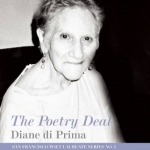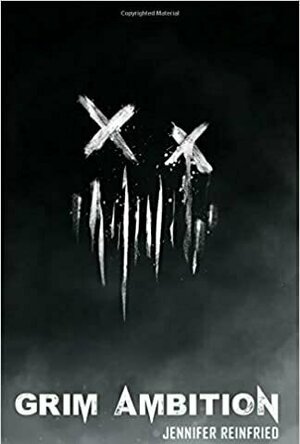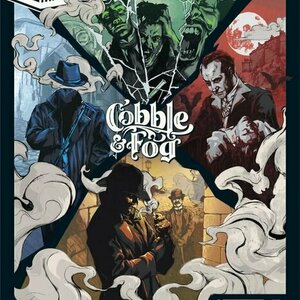Search
Search results
I usually don't judge a book by its cover, but I'm not going to lie. When I saw the gorgeous cover for Nancy Churnin's children's book For Spacious Skies, I fell in love with the cover and knew I had to read the book. I'm really glad I did because everything about it was fantastic, and I even learned a few things I had never known about the song America the Beautiful and its creator, Katharine Lee Bates.
For Spacious Skies tells the condensed biography of Katharine Lee Bates, the creator of the song America the Beautiful although when it was written, it was originally a poem. Katharine Lee Bates comes across as a fantastic person. She lived in a time when men were seen as being far superior than women, but she didn't let that stop her from getting an education and being a voice for those that felt they had no voice.
I admit that I didn't know the history behind America the Beautiful, so this book was the perfect starting point. I think my favorite fact in the book was that Katharine Lee Bates never wanted or accepted any payment for penning America the Beautiful. She just wanted to give something back to the country she loved so much.
This is a biography picture book for older children, and I believe that it's written in a way that speaks to children and will draw in their attention quite easily. The length is perfect, and the wording is fantastic. Everything flows perfectly. I also liked the fact that Nancy Churnin includes an author's note as well as a timeline of Katharine's life and accomplishments at the end. The author's note goes into a little more detail about Katharine's life which is great for adults, children who want to learn a bit more, or for a discussion. The timeline makes it easy to picture events as they happened.
The illustrations in For Spacious Skies are absolutely breathtaking! Olga Baumert is the illustrator, and her talent shines through in every page. Each illustration is full of detail and really helps to drive the story. Although my 5 year old was a little young for this book, he did love the illustrations in it and even asked if we could just look at the pictures as they are quite colorful and really draw you in. Seriously, I could go on and on about amazing the illustrations are, but it's better if you just pick up a copy of the book yourself to see what I'm talking about.
Overall, I feel that For Spacious Skies is the ultimate girl power book. Katharine Lee Bates was obviously a force to be reckoned with according to this book. If you're looking for a book with a strong female and beautiful illustrations, pick up a copy of For Spacious Skies. I would definitely recommend For Spacious Skies by Nancy Churnin to adults and children aged 8 and older. I feel as if this book needs to be required reading in all elementary schools and should be in every school library. That's how good and informative it is. Grab a copy, and see for yourself!
--
(A special thank you to Edelweiss for an eBook copy of For Spacious Skies and to Nancy Churnin and Lone Star Literary Life for a hardback copy in exchange for an honest and unbiased review.)
For Spacious Skies tells the condensed biography of Katharine Lee Bates, the creator of the song America the Beautiful although when it was written, it was originally a poem. Katharine Lee Bates comes across as a fantastic person. She lived in a time when men were seen as being far superior than women, but she didn't let that stop her from getting an education and being a voice for those that felt they had no voice.
I admit that I didn't know the history behind America the Beautiful, so this book was the perfect starting point. I think my favorite fact in the book was that Katharine Lee Bates never wanted or accepted any payment for penning America the Beautiful. She just wanted to give something back to the country she loved so much.
This is a biography picture book for older children, and I believe that it's written in a way that speaks to children and will draw in their attention quite easily. The length is perfect, and the wording is fantastic. Everything flows perfectly. I also liked the fact that Nancy Churnin includes an author's note as well as a timeline of Katharine's life and accomplishments at the end. The author's note goes into a little more detail about Katharine's life which is great for adults, children who want to learn a bit more, or for a discussion. The timeline makes it easy to picture events as they happened.
The illustrations in For Spacious Skies are absolutely breathtaking! Olga Baumert is the illustrator, and her talent shines through in every page. Each illustration is full of detail and really helps to drive the story. Although my 5 year old was a little young for this book, he did love the illustrations in it and even asked if we could just look at the pictures as they are quite colorful and really draw you in. Seriously, I could go on and on about amazing the illustrations are, but it's better if you just pick up a copy of the book yourself to see what I'm talking about.
Overall, I feel that For Spacious Skies is the ultimate girl power book. Katharine Lee Bates was obviously a force to be reckoned with according to this book. If you're looking for a book with a strong female and beautiful illustrations, pick up a copy of For Spacious Skies. I would definitely recommend For Spacious Skies by Nancy Churnin to adults and children aged 8 and older. I feel as if this book needs to be required reading in all elementary schools and should be in every school library. That's how good and informative it is. Grab a copy, and see for yourself!
--
(A special thank you to Edelweiss for an eBook copy of For Spacious Skies and to Nancy Churnin and Lone Star Literary Life for a hardback copy in exchange for an honest and unbiased review.)

Shock Treatment
Book
-If you haven't read this book yet--buy it, take it home, and read it now! This is the work that...
BookInspector (124 KP) rated Grim Ambition (A Grim Trilogy #1) in Books
Sep 24, 2020
This book was offered to me by Jennifer Reinfried, and even though I’m not big fan of “Marvel” and super heroes, I got interested in this book, because the “bad girl” was involved into finding out, who Grim was. That was what drew me to this book, and it was quite a nice read for me. This is a book about good and evil, and that sometimes evil can swap sides. The description of the book is quite detailed, so I don’t see a need to add anything.
This book is full of diverse characters, and any reader will have a variety to choose from as their favourites. In this case my most favourite was Alex, the cruel and vicious right hand of Mafia’s head Vance. Let me explain you why. From all of the characters, he was the most interesting one. He had everything what great villain would need: cruel, ruthless, smart, cunning, good looking and a little bit psychotic. I personally think he was the best rounded character from all of them. I believe that Shawn needed to be a little bit more extraordinary, so knowing how to drive a car and how to shoot, when you are blind would’ve been something “wow”. Emma, was my least favourite one. She was not smart, and her way up was literary though bed, her way into infiltration through seduction and bed. She chose the easiest ways which made her really boring to me. Jaxon was quite interesting as well. It was visible that he knows more than he gives away, and he has plenty of secrets to share with the readers in upcoming books. I was really glad, that author wrote this book including more than one character. More voices in the book helps to understand the characters better, and made it more interesting for me, as a reader.
There was a whole short story about Henry, the lawyer, but in the book he disappears quite quickly. It was quite strange to me. The characters have quite a short life span in this book, that’s why I’m interested to see what author has “up her sleeve”. This story has some great twists and turns, which keeps the interest going. I really liked the flashbacks from Shawn’s past, and I think, that in another parts of this sequel, it will unfold even more. As I mentioned before, this book is not typical super hero book, Grim has his flaws and his strengths, the girl who was devoted mafia’s poppet got confused in what she is going to do further, so that’s quite unusual and at the same time refreshing. I really loved, that at the end of the book, author put the portraits of the main characters that was absolutely awesome. I loved, that I could compare them with the ones of my imagination.
The writing style of this book is easy to understand, but it contains some erotic scenes, so it is not suitable for younger readers. The chapters are not long in this book, so it doesn’t drag along. There is quite a lot of action going on in the book, so it is fun to read it. The ending of the book is quite well thought through, and it leaves that cliff hanger to keep you guessing of what will happen next. So to conclude, if you looking for some super hero action, which is different and refreshing, give it a go and you might be surprised. I am really interested to see, what other parts of this series will bring.
This book is full of diverse characters, and any reader will have a variety to choose from as their favourites. In this case my most favourite was Alex, the cruel and vicious right hand of Mafia’s head Vance. Let me explain you why. From all of the characters, he was the most interesting one. He had everything what great villain would need: cruel, ruthless, smart, cunning, good looking and a little bit psychotic. I personally think he was the best rounded character from all of them. I believe that Shawn needed to be a little bit more extraordinary, so knowing how to drive a car and how to shoot, when you are blind would’ve been something “wow”. Emma, was my least favourite one. She was not smart, and her way up was literary though bed, her way into infiltration through seduction and bed. She chose the easiest ways which made her really boring to me. Jaxon was quite interesting as well. It was visible that he knows more than he gives away, and he has plenty of secrets to share with the readers in upcoming books. I was really glad, that author wrote this book including more than one character. More voices in the book helps to understand the characters better, and made it more interesting for me, as a reader.
There was a whole short story about Henry, the lawyer, but in the book he disappears quite quickly. It was quite strange to me. The characters have quite a short life span in this book, that’s why I’m interested to see what author has “up her sleeve”. This story has some great twists and turns, which keeps the interest going. I really liked the flashbacks from Shawn’s past, and I think, that in another parts of this sequel, it will unfold even more. As I mentioned before, this book is not typical super hero book, Grim has his flaws and his strengths, the girl who was devoted mafia’s poppet got confused in what she is going to do further, so that’s quite unusual and at the same time refreshing. I really loved, that at the end of the book, author put the portraits of the main characters that was absolutely awesome. I loved, that I could compare them with the ones of my imagination.
The writing style of this book is easy to understand, but it contains some erotic scenes, so it is not suitable for younger readers. The chapters are not long in this book, so it doesn’t drag along. There is quite a lot of action going on in the book, so it is fun to read it. The ending of the book is quite well thought through, and it leaves that cliff hanger to keep you guessing of what will happen next. So to conclude, if you looking for some super hero action, which is different and refreshing, give it a go and you might be surprised. I am really interested to see, what other parts of this series will bring.
Purple Phoenix Games (2266 KP) rated Unmatched: Cobble & Fog in Tabletop Games
Mar 19, 2021
You know when you read a rulebook and you just know you are going to love the game? This was me whilst reading the rulebook for Unmatched: Cobble & Fog. I will go into more detail why I enjoy the game near the end of my review, but just know, I loved it from the start.
In Unmatched: Cobble & Fog (which I will be calling Unmatched from here) players will be taking on the roles of either Dracula and his Sisters, Sherlock Holmes and Dr. Watson, Invisible Man, or Dr. Jekyll and Mr. Hyde in a battle to the death to claim victory in this, “Who would win in a fight”-style skirmish fighting game. The last hero standing wins, so as one of my favorite characters in literary history says, “The game is afoot.”
DISCLAIMER: Even though this review is for the Cobble & Fog version of Unmatched, the rules are the same throughout the entire Unmatched family of games. I have the original Unmatched: Battle of Legends, Vol. 1 and it plays exactly the same. I prefer the characters in this version, so that’s why I am reviewing it specifically. -T
To setup, the players will choose which side of the board they wish to play and set it on the table. Next, players will choose their hero and gather all accoutrements associated with their choice. All heroes come with a deck of 30 action cards, a mini of their figure, a character card, at least one health dial (more if their sidekicks have more than one health point), and some characters will have sidekicks that have tokens, or tokens for other reasons. The youngest player places their mini on the space with the number 1 on the board, and then the rest of the players place theirs on subsequently-numbered spaces. Players shuffle their decks of action cards and draw five cards for their first hand.
On a turn a player may take two actions from the choice of: Maneuver, Scheme, Attack. When a player chooses to Maneuver they will draw a card into their hand, then move the amount of spaces noted on their character card (typically two spaces). These movement values may be boosted by also discarding additional cards for their boost value and adding it to the number of spaces moved.
All action cards will specify which character may use it for attack, defense, or Scheme action. These Scheme cards have a lightning bolt icon on them to indicate that they are played face-up to the table, resolved, and then discarded.
Finally, if a melee-based character is positioned adjacent to an opponent, or if a ranged character is in the same zone as an opponent, they may Attack said opponent. To Attack, the active player declares which opponent will be attacked, and each player involved will choose cards from their hands to use in the battle. The attacking player will need to use attack or versatile (either used for attack or defense) cards to try to inflict damage, while the defending player will need to play defense or versatile cards in defense. The difference of the values printed on the cards will determine which character wins the battle and if health points are to be deducted from the health dial.
Many cards will have action instructions that trigger either immediately during battle or even after the battle concludes. Resolve these actions when appropriate and try to stay on your feet.
Play continues in this fashion of moving around the board to gain cards or using the cards to scheme or attack/defend. The winning player is they who survives at the end and vanquishes all foes on the board.
Components. I love everything about the components in this game. The box is great. The insert is really incredible and well thought out. The cards are great quality and the game features spectacular art all around. The minis are cool and luckily are fitted inside colored bases to remind players which mini is theirs. The sidekick tokens are excellent thick plastic and color-matched to the bases of their hero counterparts. The board is nice and double-sided, and all the rest of the cardboard components are excellent.
It’s no secret here – I absolutely love this game. I have always been a big fan of Sherlock Holmes, and this set also includes other interesting characters to play. Each one is highly unique in style and that’s one of the reasons I am so intrigued by this system. I say system because this is not the only game in the Unmatched family. As of today the Unmatched system boasts all of these as playable characters from different sets: King Arthur, Alice, Medusa, and Sinbad from the “Battle of Legends, Vol 1” set; Robert Muldoon and raptors from the “Jurassic Park, InGen vs Raptors” set; the “Robin Hood vs Bigfoot” set; Bruce Lee; and Buffy, Spike, Willow, and Angel from the “Buffy the Vampire Slayer” set in addition to these here. I know more Jurassic Park sets are on the horizon, and I just cannot wait to see what other sets will be released in time.
Why do I love this game so much when I am not really a fan of moving and dueling games (I’m looking at you Mage Wars)? In these style of games I feel the movement is unnecessary as I just stand and fight. In this system, the only way to draw more cards from your deck is to enact the Maneuver action. There have been several times where I didn’t necessarily want to initiate a battle, but I saw opponents sitting with no cards in their hand. That means no defense cards can be played. Easy chunks of health taken by picking off the stationary few. Unmatched forces players to move around and I love that. Yes, there are opportunities to unleash giant blows or have double-digit health drops in battle, and that’s just delicious. Also there are times during play where mathing out exactly where to place your mini or sidekick is paramount to lay plans of ambush.
I mentioned earlier that I knew right away I would love this one. Opening the cover of the rulebook sold me immediately. As this set utilizes literary characters found in old timey Europe the game utilizes a period art style as well and I’m still fawning over it. Everything clicks for me and I can now understand why so many people were dying (not literally) to get copies of the game Unmatched is based on, Star Wars: Epic Duels. It is extremely fun and each character is interesting and unique. Purple Phoenix Games gives this one a well-earned GOLDEN FEATHER AWARD! If you need a skirmish style game with excellent theme and art, you must grab this post haste. If you and I fall on the same side of the coin with our gaming preferences you NEED to have this in your collection.
I don’t know how many other sets I will be looking to add to my collection at this point, but I cannot tell you how excited I would be to pit Bigfoot against Bruce Lee. Or King Arthur against Dracula. It just feels epic and wonderful. Great job to the team at Restoration Games. This is a huge win for my collection.
In Unmatched: Cobble & Fog (which I will be calling Unmatched from here) players will be taking on the roles of either Dracula and his Sisters, Sherlock Holmes and Dr. Watson, Invisible Man, or Dr. Jekyll and Mr. Hyde in a battle to the death to claim victory in this, “Who would win in a fight”-style skirmish fighting game. The last hero standing wins, so as one of my favorite characters in literary history says, “The game is afoot.”
DISCLAIMER: Even though this review is for the Cobble & Fog version of Unmatched, the rules are the same throughout the entire Unmatched family of games. I have the original Unmatched: Battle of Legends, Vol. 1 and it plays exactly the same. I prefer the characters in this version, so that’s why I am reviewing it specifically. -T
To setup, the players will choose which side of the board they wish to play and set it on the table. Next, players will choose their hero and gather all accoutrements associated with their choice. All heroes come with a deck of 30 action cards, a mini of their figure, a character card, at least one health dial (more if their sidekicks have more than one health point), and some characters will have sidekicks that have tokens, or tokens for other reasons. The youngest player places their mini on the space with the number 1 on the board, and then the rest of the players place theirs on subsequently-numbered spaces. Players shuffle their decks of action cards and draw five cards for their first hand.
On a turn a player may take two actions from the choice of: Maneuver, Scheme, Attack. When a player chooses to Maneuver they will draw a card into their hand, then move the amount of spaces noted on their character card (typically two spaces). These movement values may be boosted by also discarding additional cards for their boost value and adding it to the number of spaces moved.
All action cards will specify which character may use it for attack, defense, or Scheme action. These Scheme cards have a lightning bolt icon on them to indicate that they are played face-up to the table, resolved, and then discarded.
Finally, if a melee-based character is positioned adjacent to an opponent, or if a ranged character is in the same zone as an opponent, they may Attack said opponent. To Attack, the active player declares which opponent will be attacked, and each player involved will choose cards from their hands to use in the battle. The attacking player will need to use attack or versatile (either used for attack or defense) cards to try to inflict damage, while the defending player will need to play defense or versatile cards in defense. The difference of the values printed on the cards will determine which character wins the battle and if health points are to be deducted from the health dial.
Many cards will have action instructions that trigger either immediately during battle or even after the battle concludes. Resolve these actions when appropriate and try to stay on your feet.
Play continues in this fashion of moving around the board to gain cards or using the cards to scheme or attack/defend. The winning player is they who survives at the end and vanquishes all foes on the board.
Components. I love everything about the components in this game. The box is great. The insert is really incredible and well thought out. The cards are great quality and the game features spectacular art all around. The minis are cool and luckily are fitted inside colored bases to remind players which mini is theirs. The sidekick tokens are excellent thick plastic and color-matched to the bases of their hero counterparts. The board is nice and double-sided, and all the rest of the cardboard components are excellent.
It’s no secret here – I absolutely love this game. I have always been a big fan of Sherlock Holmes, and this set also includes other interesting characters to play. Each one is highly unique in style and that’s one of the reasons I am so intrigued by this system. I say system because this is not the only game in the Unmatched family. As of today the Unmatched system boasts all of these as playable characters from different sets: King Arthur, Alice, Medusa, and Sinbad from the “Battle of Legends, Vol 1” set; Robert Muldoon and raptors from the “Jurassic Park, InGen vs Raptors” set; the “Robin Hood vs Bigfoot” set; Bruce Lee; and Buffy, Spike, Willow, and Angel from the “Buffy the Vampire Slayer” set in addition to these here. I know more Jurassic Park sets are on the horizon, and I just cannot wait to see what other sets will be released in time.
Why do I love this game so much when I am not really a fan of moving and dueling games (I’m looking at you Mage Wars)? In these style of games I feel the movement is unnecessary as I just stand and fight. In this system, the only way to draw more cards from your deck is to enact the Maneuver action. There have been several times where I didn’t necessarily want to initiate a battle, but I saw opponents sitting with no cards in their hand. That means no defense cards can be played. Easy chunks of health taken by picking off the stationary few. Unmatched forces players to move around and I love that. Yes, there are opportunities to unleash giant blows or have double-digit health drops in battle, and that’s just delicious. Also there are times during play where mathing out exactly where to place your mini or sidekick is paramount to lay plans of ambush.
I mentioned earlier that I knew right away I would love this one. Opening the cover of the rulebook sold me immediately. As this set utilizes literary characters found in old timey Europe the game utilizes a period art style as well and I’m still fawning over it. Everything clicks for me and I can now understand why so many people were dying (not literally) to get copies of the game Unmatched is based on, Star Wars: Epic Duels. It is extremely fun and each character is interesting and unique. Purple Phoenix Games gives this one a well-earned GOLDEN FEATHER AWARD! If you need a skirmish style game with excellent theme and art, you must grab this post haste. If you and I fall on the same side of the coin with our gaming preferences you NEED to have this in your collection.
I don’t know how many other sets I will be looking to add to my collection at this point, but I cannot tell you how excited I would be to pit Bigfoot against Bruce Lee. Or King Arthur against Dracula. It just feels epic and wonderful. Great job to the team at Restoration Games. This is a huge win for my collection.
Daniel Boyd (1066 KP) rated Sons of Anarchy - Season 1 in TV
Jul 21, 2017
The Sins of The Father Are Visited On The Sons…
When this show initially premiered I dismissed it entirely. I instantly assumed that it was just some manly, cheesy rubbish that wasn’t worth my time. How small minded of me. It was only after the caretaker in my work recommended that I give it a go that I went back to it. For the first few episodes, it seemed as though I was right. A bunch of leather clad manly bikers shooting up rival gangs and blowing stuff up, but stick with this show and you will see just how deep the rabbit hole really goes. The writing here is phenomenal, the show was created and co-written by Kurt Sutter, who also plays Otto in the show. He is clearly a literary genius, as he also penned The Shield, as well as the recent, brilliantly written Jake Gyllenhall boxing movie, Southpaw. The show follows a gang of bikers called SAMCRO, (the Sons of Anarchy Motorcycle Club Redwood Original,) loosely based on the real life biker gang, The Hell’s Angels, (a few of which’s members actually have cameo roles in the show,) our protagonist is a young man named Jackson Teller, he is the son of John Teller, the original founder of the biker gang. Soon after Jax was born, his father was killed in a traffic collision, although it is suspected that there is more to his death than just that. Since then his mother Gemma has remarried to the current President of the gang, a man called Clay Morrow, who was also John Teller’s best friend and who co-founded the gang along with JT. When the show begins Jax is Clay’s Vice president, or VP and when Clay begins to lead the club on what Jax sees as a more violent, destructive path, he opposes him and he seeks a way to maintain the club, without having to kill anyone or take part in any shady business. Clay sees Jax as an idealist and tells him so, but Jax is persistent in his ideals, as he believes that this is the way that his Father would have wanted the club to be ran. The supporting cast of characters also add a lot to the overarching plot and each have their own respective back stories. There is Tara, Jax’s ex girlfriend, whom he falls back in love with, Gemma, who is Jax’s mother and the matriarch of the club, then there is Tig, Clay’s triggerman initially, but as the show goes on we see that he has a softer side, then there is Opie, Jax’s best friend from a young age who initially wants to leave the biker life behind, but after certain events in the first season of the show unfold, circumstances force him to stay by Jax’s side. There is also Chibs, the Scotsman who doesn’t mess about when it comes to dealing with a problem, there is also Happy, an emotional psychopath who is also played brilliantly by a real life ex Hell’s Angel member. Then there is Juice, a young Latino man who struggles with his personal demons throughout the show and lastly there is Bobby Elvis, another older member of the group who may be a big softie on the cover, but can also handle himself if anyone tries to cross him. From after the first season, the plot begins to twist and turn as we witness several double crosses and multiple agendas come into play and one of my favourite things about this show is that even though Jax is clearly the protagonist, he isn’t always the good guy and he makes some questionable decisions when he is put under pressure. I don’t want to say much else as I’m worried that I will spoil the show, but it definitely is worth your time and I would definitely recommend this show to anyone who is interested in a good crime saga.
The four Plumb siblings aren't exactly the most likable group of brothers and sisters. Is their rather despicable, hands-off mother, Francie, to blame? Further, the siblings can't agree on much, either, except how they are all looking forward to the inheritance they've deemed "The Nest." Their late father intended the money to simply be a small sum to help each of his children along late in life (they can't get the money until the youngest turns 40), but the money has been inflated by the stock market and wise investments, and now each sibling is seriously relying on the money in some way. But then, one evening at a wedding, the eldest brother Leo drunkenly gets behind the wheel of his Porsche, a young waitress from the party at his side, and crashes the car. The waitress is badly injured, and the children's mother dips deeply into The Nest to get Leo out of his jam. The other siblings are enraged as they are forced to confront their own financial problems. Melody, the youngest, needs to send her twins to college. Jack, the other brother, has been secretly borrowing against his vacation home, without telling his lawyer husband. And Bea, their sister, hasn't been able to follow up on the success of her early work and finish her novel: she even had to pay back the advance. Leo promises his siblings he will pay them back; but can their wayward older brother be trusted?
This novel received a lot of hype, so of course I avoided reading it for a while. As I was reading it, I thought for quite some time that I'd been duped, as it seemed to be about a bunch of greedy, hateful siblings who cared about nothing but money and appearances. But D'Aprix Sweeney has a deft way with words and somehow, amazingly, this book is compulsively readable and surprisingly enjoyable. After a while, you get to know each Plumb sibling fairly well. While some are pretty despicable (ahem, Leo, ahem), some are just people and parents trying to get by--albeit not always in the most reasonable fashion. I felt the worst for Bea and Melody.
The most interesting part about this novel is that D'Aprix Sweeney doesn't just focus on the four siblings, but she opens up the aperture to include a whole cast of supporting characters, and that is where the novel really shines. Everyone becomes connected somehow, but it doesn't feel trite. We hear from folks in the literary world who work (and love) Bea and Leo, for instance. Leo's love interest (and Bea's editor) Stephanie is my favorite. So while parts of the novel are predictable and I found myself wondering if I cared about any of the Plumbs whatsoever, it's the characters to whom they are connected that are interesting. It takes a talented author to make you want to read a story, even if you don't like the main characters, per se. However, you'll find yourself caught up in the story and wanting to find out what happens. The bonus of extending the characters beyond the four Plumbs is that you get several characters' perspective on an issue or event. In the end, things tie up and together, but again, not too neatly or annoyingly. The ending is perfect somehow--again, a testament to the author's skill.
Overall, the novel surprised me. I honestly usually am not a fan of the spoiled New Yorker novels, but this one was different. It really drew me in. There's a depth and a warmth behind the characters. Definitely worth reading.
<a href="http://justacatandabookatherside.blogspot.com/">My Blog</a> ~ <a href="https://www.facebook.com/justacatandabook/">Facebook</a>; ~ <a href="https://twitter.com/justacatandbook">Twitter</a>;
This novel received a lot of hype, so of course I avoided reading it for a while. As I was reading it, I thought for quite some time that I'd been duped, as it seemed to be about a bunch of greedy, hateful siblings who cared about nothing but money and appearances. But D'Aprix Sweeney has a deft way with words and somehow, amazingly, this book is compulsively readable and surprisingly enjoyable. After a while, you get to know each Plumb sibling fairly well. While some are pretty despicable (ahem, Leo, ahem), some are just people and parents trying to get by--albeit not always in the most reasonable fashion. I felt the worst for Bea and Melody.
The most interesting part about this novel is that D'Aprix Sweeney doesn't just focus on the four siblings, but she opens up the aperture to include a whole cast of supporting characters, and that is where the novel really shines. Everyone becomes connected somehow, but it doesn't feel trite. We hear from folks in the literary world who work (and love) Bea and Leo, for instance. Leo's love interest (and Bea's editor) Stephanie is my favorite. So while parts of the novel are predictable and I found myself wondering if I cared about any of the Plumbs whatsoever, it's the characters to whom they are connected that are interesting. It takes a talented author to make you want to read a story, even if you don't like the main characters, per se. However, you'll find yourself caught up in the story and wanting to find out what happens. The bonus of extending the characters beyond the four Plumbs is that you get several characters' perspective on an issue or event. In the end, things tie up and together, but again, not too neatly or annoyingly. The ending is perfect somehow--again, a testament to the author's skill.
Overall, the novel surprised me. I honestly usually am not a fan of the spoiled New Yorker novels, but this one was different. It really drew me in. There's a depth and a warmth behind the characters. Definitely worth reading.
<a href="http://justacatandabookatherside.blogspot.com/">My Blog</a> ~ <a href="https://www.facebook.com/justacatandabook/">Facebook</a>; ~ <a href="https://twitter.com/justacatandbook">Twitter</a>;
Gareth von Kallenbach (980 KP) rated Inferno (2016) in Movies
Jul 15, 2019
Inferno is the latest thriller based on the novels of Dan Brown that follow the fictional character of Robert Langdon who is a world renowned symbologist (study of symbols). Like The DaVinci Code and Angels & Demons before them, Inferno follows mostly the same story arch and structure.
Tom Hanks has reprised his role as Robert Langdon (this time with an appropriate haircut) and once again he travels around to beautiful locations of European art and architecture with a young woman by his side, trying to solve a series of clues in order to stop a billionaire madman who believes humanity is a parasite and his plague inferno is the cure. If this sounds like a film you have seen before, it is because you have. In the other two movies that have come before it
Once again, audiences will enjoy being whisked around to see beautiful cities, art, and architecture to solve historical literary clues as the film plays out like a late middle ages travel lesson. These are all good things.
The bad is that during the first half of the film, Robert Langdon has amnesia due to a blow to the head. He cannot remember much which of what he was doing, which makes him a less compelling character. Throughout the series of films, Langdon has used his “dizzying intellect” to solve clues the brightest minds could not solve. In Inferno, that “super power” is taken away and we are left with an average, middle aged man, who is somehow able to solve impossible puzzles and clues while being chased by seedy underground characters and the world health organization. Who for the purposes of this film, seem to have become the FBI/CIA in one. This setup does not work and makes for a boring first half of the film Eventually Langdon regains his memory and the film picks up a bit from there, but for some it might be too late.
As far as the performances go, Tom Hanks delivers a watchable, likable performance, much to his credit considering that the character of Robert Langdon is a relatively boring protagonist. Meanwhile Ben Foster plays the somewhat forgettable billionaire madman (Bertrand Zobrist) in a somewhat forgettable way. It is a shame because perhaps if we had a chance to understand the nuance of his character, like I assume can be done in the books, he would have felt like a more compelling character and caused us to think if he was to be on the right side of history. Unfortunately, any nuance from the book does not translate well to the film adaptation. But not all is lost. For me, the bright spot of the film was Felicity Jones who plays the gifted doctor Sienna Brooks. Brooks, who in helping Langdon with his injury, gets swept up into game for the fate of the world. In her performance, Felicity Jones shows a transition of her emotional resonance throughout the film as her character develops and we get to understand her more, for better or worse. I am excited to see Jones continue to grow in her career and look forward to seeing her this holiday’s Star Wars Story: Rouge One. She has the ability to carry a film, let’s hope she is given the opportunity to do so.
In the end, Inferno is not a terrible film, but it is not very memorable either. Unlike the two films before it, Robert Langdon is handcuffed by an injury that doesn’t allow him to use his intellect that made him compelling before Couple that with what seems like an inspector gadget plot, where the bad guy leave a series of clues to foil his own master plan, and you end up with a “Meh” film.
Tom Hanks has reprised his role as Robert Langdon (this time with an appropriate haircut) and once again he travels around to beautiful locations of European art and architecture with a young woman by his side, trying to solve a series of clues in order to stop a billionaire madman who believes humanity is a parasite and his plague inferno is the cure. If this sounds like a film you have seen before, it is because you have. In the other two movies that have come before it
Once again, audiences will enjoy being whisked around to see beautiful cities, art, and architecture to solve historical literary clues as the film plays out like a late middle ages travel lesson. These are all good things.
The bad is that during the first half of the film, Robert Langdon has amnesia due to a blow to the head. He cannot remember much which of what he was doing, which makes him a less compelling character. Throughout the series of films, Langdon has used his “dizzying intellect” to solve clues the brightest minds could not solve. In Inferno, that “super power” is taken away and we are left with an average, middle aged man, who is somehow able to solve impossible puzzles and clues while being chased by seedy underground characters and the world health organization. Who for the purposes of this film, seem to have become the FBI/CIA in one. This setup does not work and makes for a boring first half of the film Eventually Langdon regains his memory and the film picks up a bit from there, but for some it might be too late.
As far as the performances go, Tom Hanks delivers a watchable, likable performance, much to his credit considering that the character of Robert Langdon is a relatively boring protagonist. Meanwhile Ben Foster plays the somewhat forgettable billionaire madman (Bertrand Zobrist) in a somewhat forgettable way. It is a shame because perhaps if we had a chance to understand the nuance of his character, like I assume can be done in the books, he would have felt like a more compelling character and caused us to think if he was to be on the right side of history. Unfortunately, any nuance from the book does not translate well to the film adaptation. But not all is lost. For me, the bright spot of the film was Felicity Jones who plays the gifted doctor Sienna Brooks. Brooks, who in helping Langdon with his injury, gets swept up into game for the fate of the world. In her performance, Felicity Jones shows a transition of her emotional resonance throughout the film as her character develops and we get to understand her more, for better or worse. I am excited to see Jones continue to grow in her career and look forward to seeing her this holiday’s Star Wars Story: Rouge One. She has the ability to carry a film, let’s hope she is given the opportunity to do so.
In the end, Inferno is not a terrible film, but it is not very memorable either. Unlike the two films before it, Robert Langdon is handcuffed by an injury that doesn’t allow him to use his intellect that made him compelling before Couple that with what seems like an inspector gadget plot, where the bad guy leave a series of clues to foil his own master plan, and you end up with a “Meh” film.

Audio Books by Audiobooks
Book and Entertainment
App
Wish you could read more but don’t have the time? You’ll love audiobooks! Audiobooks.com is the...

The Poetry Deal
Book
"The Poetry Deal: San Francisco Poet Laureate Series No. 5 gives us di Prima's vision as she looks...

Christ In Song
Music and Book
App
We are pleased to present the Christ in Song hymn treasury. These hymns are hand-picked for their...





